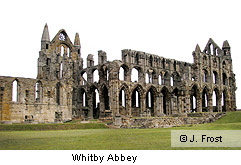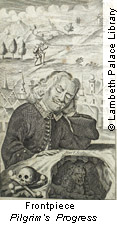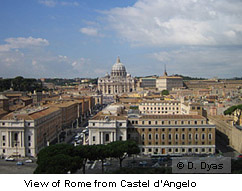
The Reformation Onwards

Opposition to place pilgrimage

In England, as in a number of other European countries, the Reformation proved to be a watershed in the history of pilgrimage to holy places. Catholic and Orthodox Christians continued to revere traditional shrines but in countries touched by the Reformation, pilgrimage, linked as it was with the cult of the saints, the veneration of images, the earning of merit and the granting of indulgences, was a prime target. The leading Reformer Martin Luther moved from questioning the value of pilgrimages to outright condemnation. In 1520 he declared 'All pilgrimages should be stopped. There is no good in them: no commandment enjoins them, no obedience attaches to them. Rather do these pilgrimages give countless occasions to commit sin and to despise God's commandments' (To the Christian Nobility). Luther's criticisms echo many of the points made earlier by the Lollards. He challenged the close association between pilgrimage and the concept of acquiring acceptance with God through 'good deeds' (which ran contrary to his belief that human beings could not earn salvation but needed to depend on God's grace). He suggested that emphasis on special 'holy places' devalued other locations, such as the local parish church, where believers should also expect to encounter God, 'who is the same God everywhere'. He also maintained that those who went on pilgrimage were all too often simply evading their daily responsibilities.
Before long, the majority of English shrines had been destroyed; their statues and relics discredited. The monasteries, which had supported 'place' pilgrimage through maintaining shrines and providing hospitality for pilgrims, were suppressed. Implementing change at the level of popular devotion and parish worship took time, for deeply-rooted beliefs and long-established patterns of devotion do not vanish overnight, whatever official policy may dictate. However, by the late 1570s even parish churches, which had experienced a bewildering series of changes and reversals through the reigns of Henry VIII, Edward VI and Mary Tudor, found a new order taking hold.
The pilgrimage motif in literature

Protestants might have turned away from both pilgrimage to places and the inner journeying of the anchoritic and monastic movements, but the concept of life as pilgrimage remained a powerful and fruitful image. The continuing power of pilgrimage to shape the imagination can be seen in the work of a number of post-Reformation writers. 'The Passionate Man's Pilgrimage', attributed to Sir Walter Raleigh, is a poignant expression of this theme, traditionally thought to have been written on the eve of the poet's execution. George Herbert and William Shakespeare also explore the pilgrimage motif.
The greatest, and undoubtedly the most influential, expression of this theme occurs in John's Bunyan's The Pilgrims' Progress, which portrays the journey through life of a representative figure who leaves his home and family in the City of Destruction in order to seek the Celestial City.
Post-Reformation travellers from England

Even in the context of journeying, the pilgrimage concept did not entirely lose its power. Pilgrimage might have been rejected by Protestants, but travel went on and the discontinuities were fewer than might have been imagined. Pre-Reformation pilgrimage had often included an element of curiositas, a desire to see the world and the marvels which it offered, which was sometimes criticised as undermining devotion. The centuries which followed the Reformation were ages of exploration in which curiositas was unfettered. The English still journeyed overseas to be educated and transformed, and to bring home souvenirs. Some visited Rome, which drew criticism from Protestant writers for its 'images' and 'relics'. Others were still keen to visit Palestine and some seventeenth-century travellers including Henry Timberlake and Henry Maundrell have left accounts of their journeys. Timberlake, in particular, was clearly moved by his experiences, falling to his knees at his first sight of Jerusalem. Some of his contemporaries, though scorning relics, inscribed their names on the walls of the great churches (as medieval pilgrims had done before them) and had the Jerusalem cross tattooed upon their arms.
During the eighteenth century, the Grand Tour formed a kind of cultural pilgrimage from which travellers returned with new artistic and architectural perspectives and artefacts, which influenced and shaped their everyday environment.
Dee Dyas



